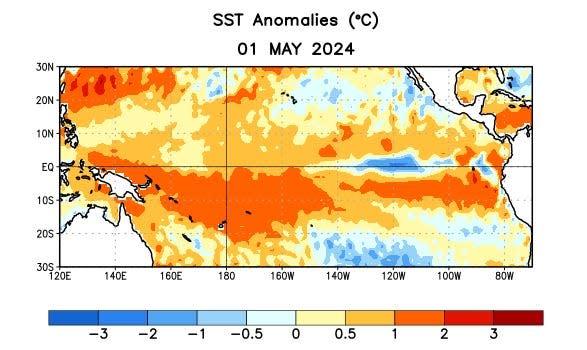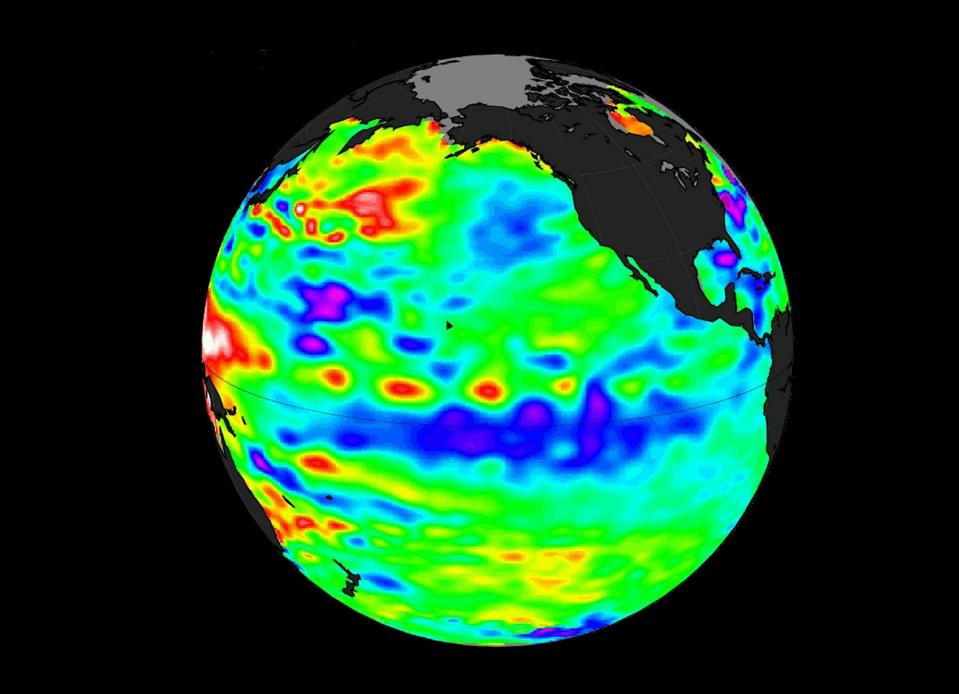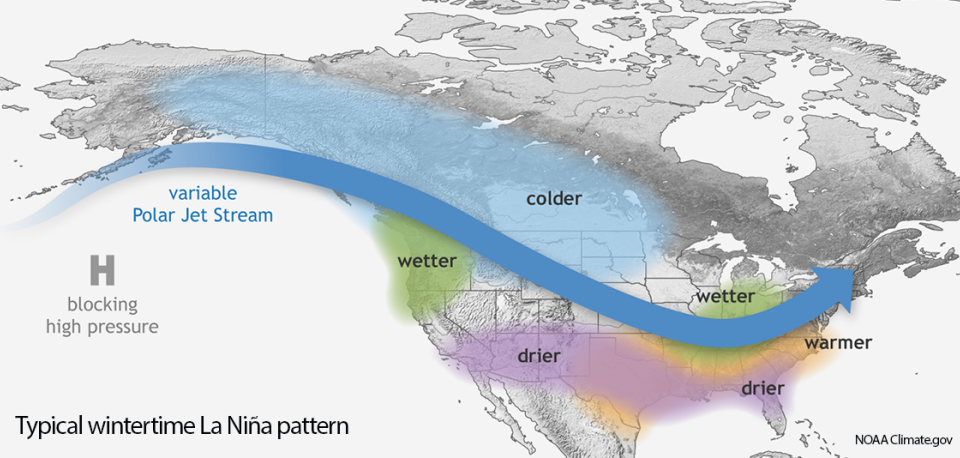Bad news for hurricane season: La Nin?a chances grow more certain, NOAA says
Climate troublemaker La Nin?a isn't here yet – but it is on the way, federal weather forecasters said in a report released Thursday morning.
In fact, forecasters from the National Oceanic and Atmospheric Administration gave the climate pattern as much as an 85% chance of forming by late fall. "We are very confident that La Nin?a will form by this fall," Nat Johnson, a NOAA meteorologist, told USA TODAY. Once it forms, it's also supposed to last through next winter and would impact U.S. weather throughout the coldest months.
Of more immediate concern, there's also as much as a 69% chance it will develop by the summer months (July-September), NOAA said. This is key because a full-fledged La Nin?a could worsen the severity of the Atlantic hurricane season, the heart of which is typically in September.

What is La Nin?a?
La Nin?a is a natural climate pattern marked by cooler-than-average seawater in the central and eastern Pacific Ocean. When the water cools at least 0.9 degree Fahrenheit below average for three straight months, a La Nin?a is declared.
Surprisingly, that small amount is enough to affect weather and climate patterns in the U.S. and around the world.
Get ready to hear a lot about La Ni?a. Here's why it could make hurricane season worse.
The cycle between La Nin?a and its "sibling" El Nin?o is hugely important for agriculture worldwide. El Nin?o generally brings wetter conditions to the Americas, while a La Nin?a has the opposite effect.

Is El Nin?o over?
Not yet, it's technically still in effect but is fading fast, soon to be replaced by what's known as "ENSO-neutral" conditions, which is an intermediate stage between La Nin?a and El Nin?o. NOAA's forecast "favors an imminent transition to ENSO-neutral conditions, with La Ni?a developing during July-September 2024 and then persisting through the Northern Hemisphere winter."
The entire natural climate cycle is officially known by climate scientists as the "El Nin?o – Southern Oscillation" (ENSO), a see-saw dance of warmer and cooler seawater in the central Pacific Ocean.
Is this an unusually slow transition from one to the other?
"Actually, this transition appears to be occurring rather quickly," Johnson told USA TODAY. "We are unlikely to experience many seasons of ENSO-neutral conditions before the onset of La Nin?a, whereas on some other occasions we may experience more than a year before transitioning to La Nin?a."
"The strength of the El Nin?o is likely a major factor for why this transition is fast," he added. "It’s not unusual for strong El Nin?os to transition quickly to La Nin?a, as the discharge of heat away from the tropical Pacific tends to be more dramatic following a strong El Nin?o."

What is a La Nin?a winter?
Forecasters are calling for La Nin?a to continue throughout next winter. A typical La Nin?a winter in the U.S. brings cold and snow to the Northwest and unusually dry conditions to most of the southern tier of the U.S., according to NOAA's Climate Prediction Center. The Southeast and Mid-Atlantic also tend to see warmer-than-average temperatures during a La Nin?a winter.
This article originally appeared on USA TODAY: La Nin?a 2024: New forecast from NOAA is bad news for hurricane season
